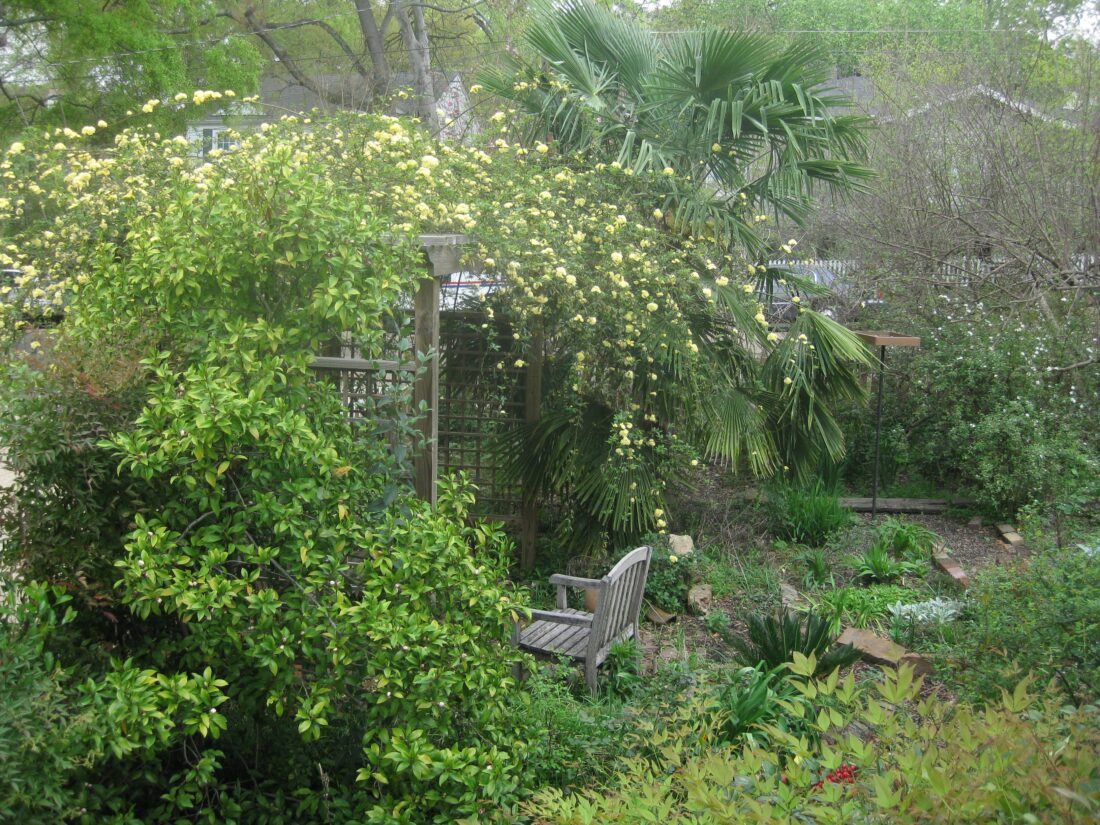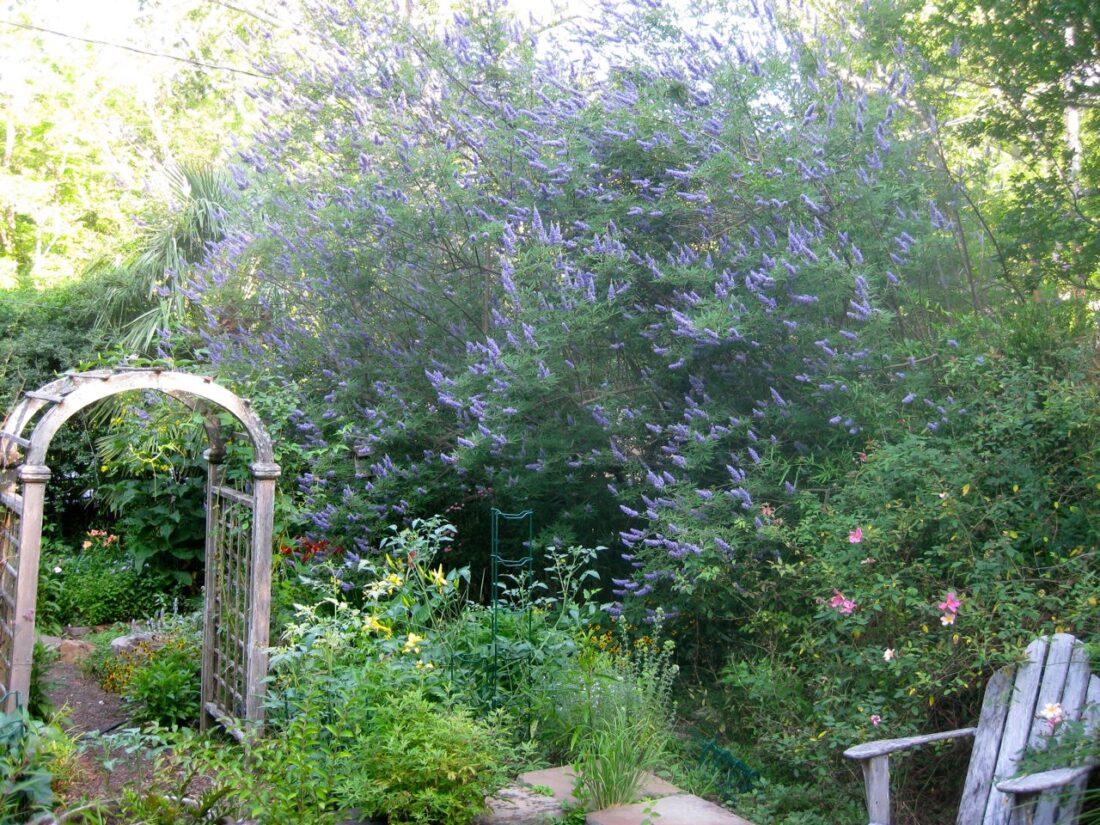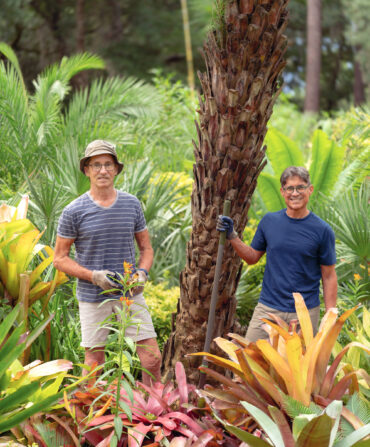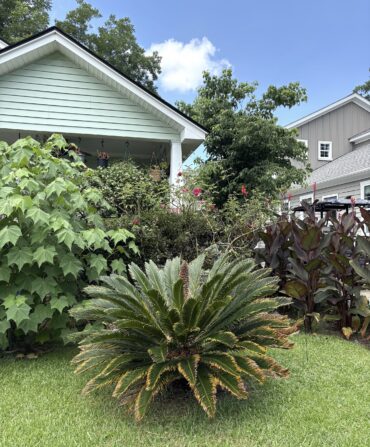In my mother’s wild garden, which she clawed from the heavy Yazoo clay of a broad bare lawn in Jackson, Mississippi, I had a little patch she let me call my own. Zinnias, bachelor’s buttons, radishes, a watermelon vine. Any seed packet that looked bright. I didn’t pay attention to USDA hardiness zones, and while she might have steered me away from the cool-weather annuals—the brilliant blue lupines and larkspur—she also allowed me to make mistakes. To plant something delicate that failed. I can still see the painfully yellow leaves of an overwatered elephant ear. This was my first lesson in the garden: You don’t know what will work until you see what doesn’t. This applies equally to my childhood writings—poems, plays, fairy tales, each dashed off haphazardly, many begun but never finished. In retrospect, I was productively flailing. Planting all the pretty seeds. At six years old, I didn’t know that either gardening or writing would remain important to me; I still wanted to be a ballerina. But there is a cross-pollination between these pursuits that makes tending my garden a literary pastime, and writing books a way to practice my mother’s lessons from the soil.
As I became older, my gardening responsibilities grew. My mother gave me a Cecile Brunner rose for my patch, which had to be pruned each February. She also gave me the chore of deadheading the pink spirea, one penny per snip, and snapping off each day’s wilted daylilies. I weeded alongside her, picking at the stems of the wild onion and clover while she dug down to the multiplying bulbs. I trailed after her as she wheelbarrowed the frostbitten cannas to the back compost heap, where plant excess joined eggshells and coffee grounds. Simultaneously, my writing became more focused; I began to finish my stories and even revise them. I thought about characters as full humans, not just facsimiles of myself. I wrote a novella about a family of orphaned girls named after birds, showed it to my English teacher, studied her critique, and adjusted what wasn’t working. This was my second lesson: Beauty is never sui generis, but is a product of labor.

When I graduated from my mother’s garden and established the first beds that were all mine, I was living in a little house in Chapel Hill, North Carolina. My mother gamely visited to help me get it established, to mix in the right ratio of compost to topsoil, to offer advice in the local nurseries, to nudge my young butterfly bush a foot farther from my polyantha rose. Her green thumb came from trial and error, the shared wisdom of friends, and stacks of books, while her eye for beauty was shaped by her career as an art historian. She was up for challenges.
Together, we learned the rules of Zone 7 horticulture, and were both delighted when plants she struggled with in Mississippi flourished for me: foamflower, lavender, Spanish bluebells. For the first time, I took a creative writing class, cheating on my graduate program in history. What a difference it made to hear strangers’ impressions of my fantasies! I suddenly found myself with peers and readers. When I put my writing into dialogue with others, and with the inheritances of literature, it became three-dimensional—no longer just a mirror but a moving body in the world. This was my mother’s third lesson: A garden is never created in isolation; it emerges from community, human and animal, from pass-along plants and pollinators.


As my history PhD turned into a creative writing MFA, and my stories grew into novels, I borrowed the careful aesthetics of my mother’s garden as a guide to structuring narratives. Her corner lot is subdivided into informal rooms: the shade garden that slopes beneath the cherry laurel, thick in spring with hellebores; the massive forms of boxwood and azalea guarding the porch; the back arbor swallowed by grapevine and a Lady Banks rose and surrounded by cheery coneflower and black-eyed Susans; the pond at the center of the garden like a watery heart, loud on summer nights with mating toads. Gazing down the north side of the lawn, from the glider to the distant platform birdfeeder, I am struck by how the shapes speak to each other. The tall uprights of Rudbeckia maxima, waving Pennisetum grasses, the parsley hawthorn. The spreading mounds of a star magnolia, a sago palm, a Cornelia rose. The groundcover of wildflowers and weeds—oxalis, asters, early daffodils—that pull the rooms together into a single tapestry. This is how I began to understand novels—not as linear narratives, but as circular worlds with patterns and motifs. I began experimenting with structure and time, allowing characters across centuries to converse with one another, using objects to tie strangers together. My mother’s fourth lesson: A garden should have echoes, repeating colors and textures that strike the eye with both surprise and familiarity.
Now I live in New Orleans and have created yet another garden from scratch, this one subtropical and lush. I grow satsumas and pomegranates, and if I turn my back, one stalk of ginger will become one hundred. When passersby stop to admire the jungle, I hear my mother’s voice in my response: “This? No, no, it’s a mess!” To the gardener, the garden is chaos. Here in this patch of land, I decided—finally—to write a novel about plants. The women in my novel would catalog every species they could find in the Roman Colosseum, mostly weeds, mostly wild unwanted things, and in that search would discover themselves: as women, also wild and unwanted.
Growing up, I often saw my mother sweaty, dirt streaked across her cheeks, jeans muddy and spotted with burrs. I read her unruliness as an essential part of womanhood, just as it was necessary in the garden. We were not after the formality of Versailles, its control off-putting, even claustrophobic; we wanted the explosive bounty of Sissinghurst. This was the final lesson of my mother’s garden, one which permanently shaped the way I write: Wildness is welcoming. Abundance is a sign of artistic generosity.
Some writers come of age through exposure to Shakespeare, or Flannery O’Connor, or Lucille Clifton. I came of age with my hands in the dirt, flanked by roly-polies and dandelions, my mother’s flowers teaching me how to labor, how to create, and how to open myself up to all the wild stories of the world.
Katy Simpson Smith’s new novel The Weeds comes out April 18.









